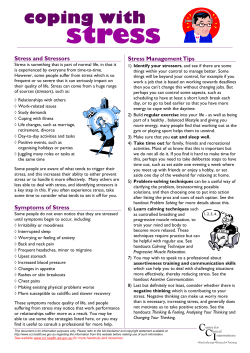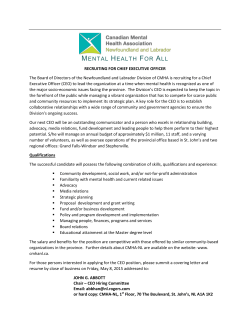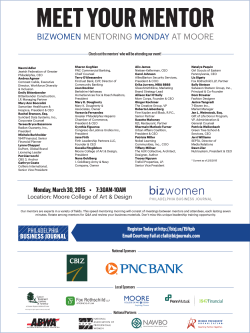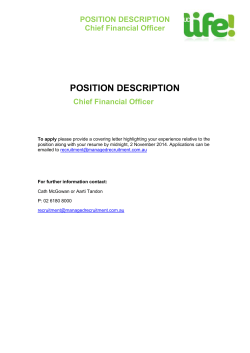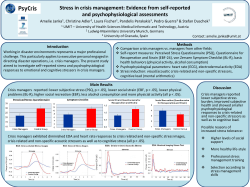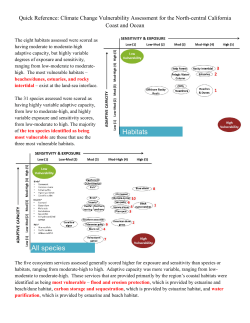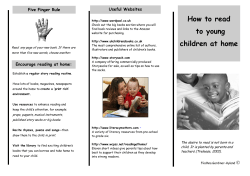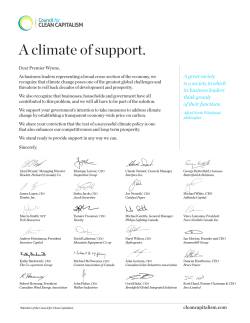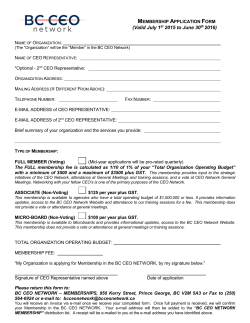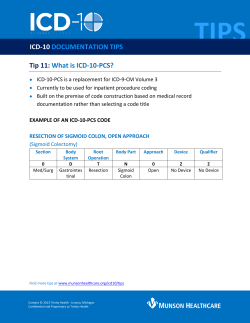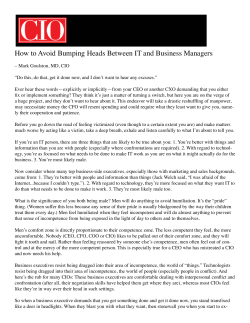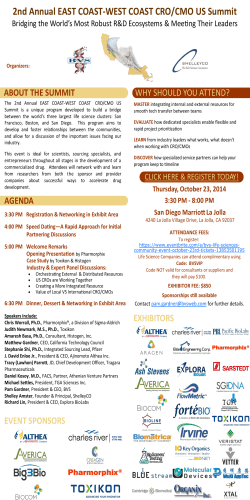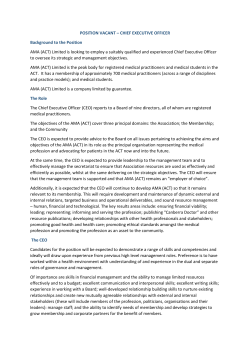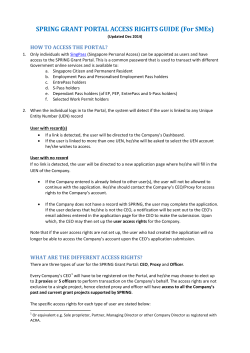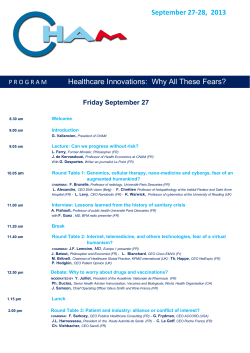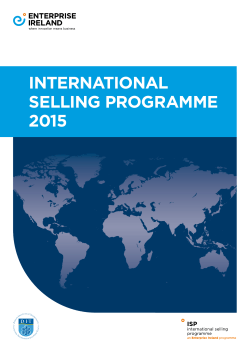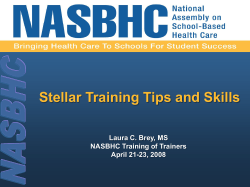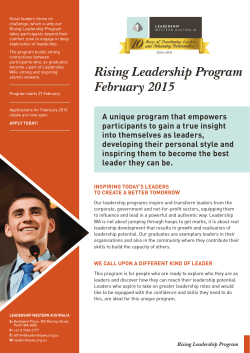
How to Become a Successful Director of Financial Aid Tools for Leadership
How to Become a Successful Director of Financial Aid Tools for Leadership Slide 1 Presenters • Ron Day Kennesaw State University rday9@kennesaw.edu • Billie Jo Hamilton University of South Florida bjhamilton@usf.edu Slide 2 Session Agenda • Preparing your toolkit – some leadership basics • Developing your Vision • You made it – tips for success – Managing interally – Managing up • Take a deep breath – handling stress • What else do you need to know – Q & A Slide 3 Leadership Basics Slide 4 “You’re The Director” • An excellent anthology written by financial aid professionals. This book contains guidance on leadership concepts, long-term planning, change management, budgeting, and so much more. Slide 5 Leadership • “Some of the best leadership lessons I learned as a young officer were from terrible officers. I mean, absolutely morally bankrupt officers who had no redeeming qualities. People followed them out of sheer wonder for what they would do next. You learn far more from negative leadership than from positive leadership. Because you learn how not to do it. And, therefore, you learn how to do it.” General H. Norman Schwarzkopt Slide 6 • Being a leader – and a successful leader – is often a taught skill and requires good models and mentors. Without direction and an understanding of leadership, individual may demonstrate bad examples or habits that could be replicated by group members Slide 7 You’re the CEO • Every person is branded (basically – your brand is your promise to your customer) – regardless of age, position, business – all of us need to understand the importance of branding. We are CEOs of our own companies, offices, etc.: Me, Inc. Slide 8 Important Duties • Building the Culture – Work gets done though people – people are profoundly affected by culture. A lousy place to work – can drive away high performers. A great place to work can attract and retain the very best. Slide 9 How is this done? Many ways – yet it is the CEO who sets the tone. Every action – or inaction – sends a message. According to Steve Robbins, “Be careful when you sneeze.” Means – leadership is under a magnifying glass. Slide 10 • “Why don’t my people just do what I say?” It’s a common refrain among executive clients. Life at the top would be so much easier, if only “they” would “get it.” • In fact, your employees probably are doing what you say. You just may be saying things you don’t intend. It’s often not your broad proclamations that give direction; it’s the little things you do that have the biggest impact. Slide 11 Team Building • The CEO: Hires, fires, leads the sr. management team – they in turn – hire, fire, and lead the remainder of the team. The CEO must resolve differences between sr. managers – and keep them working in a common direction. Slide 12 Setting Strategy and Vision • It is the CEO who sets the direction Slide 13 Developing your vision….. Slide 14 • Vision is where the organization is going – values tell how the organization gets there. Slide 15 Why do you need a Vision? • • • • Set direction, goals for the future Serve as a starting point for decisions Help set priorities and standards Create a sense of team, meaning and connection to a greater whole • Instill (or confirm) confidence in leadership Slide 16 Developing Your Vision • Assessment: Where do you stand? – SWOT re: structure, support within the university, goals and mission • Vision: Where do you want to be? – Remember institutional goals, – SLRP, mission • Strategy: How will you get there? – GPS anyone? Slide 17 Slide 18 • Values might include: – People first – we are dedicated to not only helping students achieve their dream of achieving a degree, but also to helping each staff member realize their full potential. – Team spirit – we realize that we are at our best when we work together – Attitude – we understand that displaying the proper attitude toward customers and each other is vital to our success. – Excellence – we will only be satisfied with our best effort. – Creativity – we will work smart by continually looking Slide 19 for the best solution Visions should: • Be developed collaboratively • Clarify your core purpose as an office/department • Reflect the core values of your institution, office, profession • Be challenging, but attainable Slide 20 Remember to: • Share your vision • Treat it as a living document • Use in decision making, planning, team building • Revise and refine as necessary Slide 21 You made it! Slide 22 Regulatory Expertise • Be current • Maintain a core group of professional contacts • Secure adequate training budget • Proactive versus reactive Slide 23 Internal Management • Personnel – Personality Styles – Work Styles – Review previous evaluations – Are staff where they need to be • Knowledge Evaluation and Training – General Knowledge – Program Specific Slide 24 Critical Skills • Personal – – – – Communication Staff engagement, input/feedback Time Management Accept Responsibility-the buck stops here! • Office – Maslow’s Hierarchy • • • • • (adapted for FAAs by Lisanne Masterson) Stable Office Staff/Necessary Equipment Good Processes/Adequate Funding Friends/Support Network Professional Development/Career Advancement Legislative Advocacy Slide 25 Tips for Success – Positioning Yourself • Internal promotion vs. new hire • Starts during the interview • Information really is power – Benchmarking – Annual report – Presentations – State agency – Forwarding articles up reporting line Slide 26 Tips for Success – Positioning Yourself • Responding to complaints • Networking • Media experience – Student newspaper – Print media – TV- live and taped • Management style of your boss Slide 27 Slide 28 Take a deep breath….. Slide 29 Positives and Negatives • Equally stressful • Positive Stress • Negative Stress Slide 30 Poor Time Management • • • • • • Create daily lists Schedule Delegate Organization Managing email Interruptions Slide 31 External and Internal Stressors • • • • External Stressors are often ignored What are external stressors? Identify and examine Resolve • • • • Internal Stressors are often not workplace problems What are internal stressors? Identify and examine Resolve Slide 32 Symptoms of Stress • • • • • • • Memory problems Inability to concentrate Poor judgment Seeing only the negative Anxious or racing thoughts Constant worrying Health concerns Slide 33 Tips to relieve Stress • • • • • • Take a deep breath Stop and smell the roses Every cloud has a silver lining Acquit yourself When you need help, get help Other tips Slide 34 Q and a Slide 35 How to Become a Successful Director of Financial Aid Evaluation System APP or Web Enter Poll ID 102710 Enter Password sasfaa https://answerqwik.com/login.html Slide 36 36
© Copyright 2025
